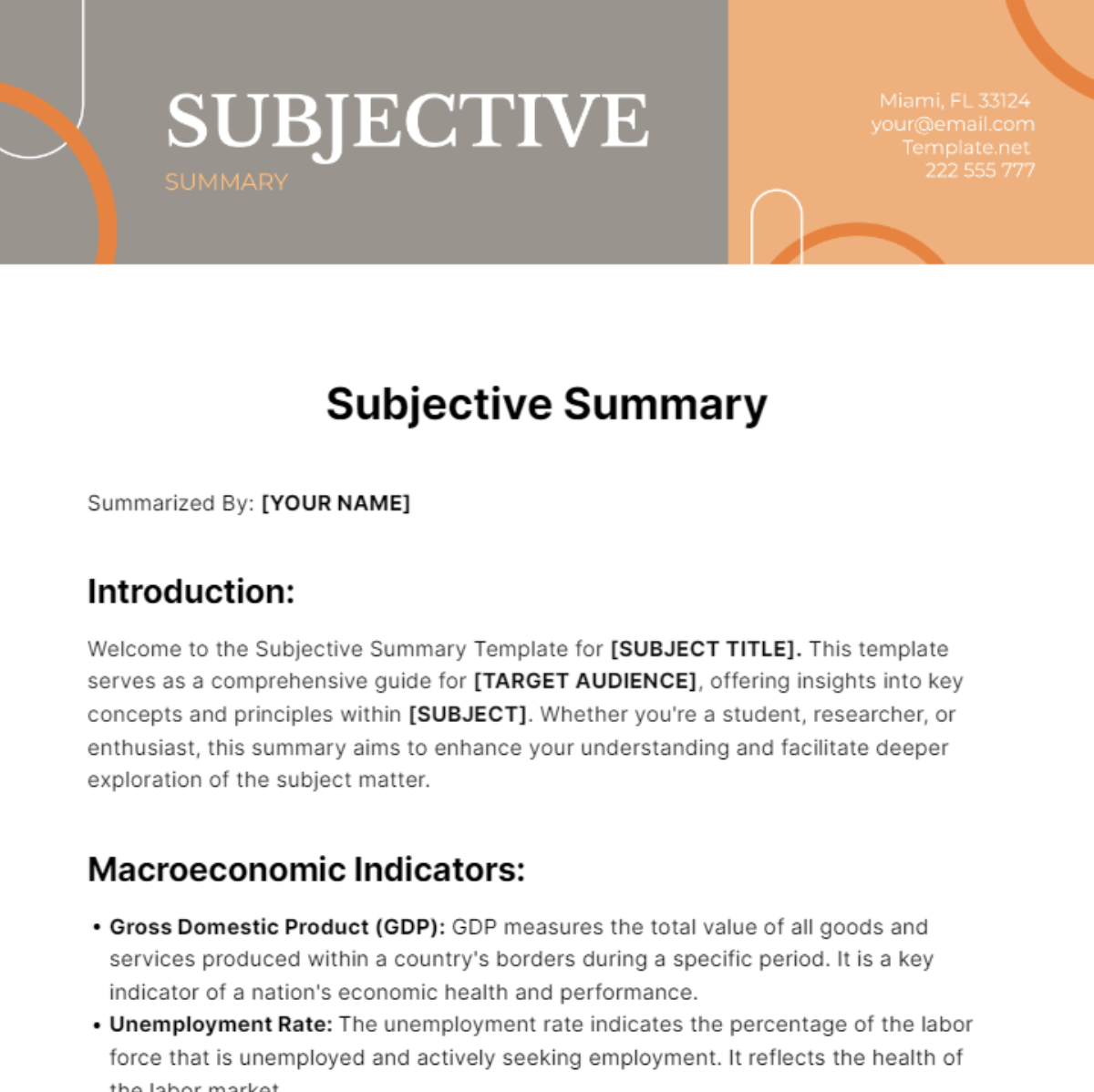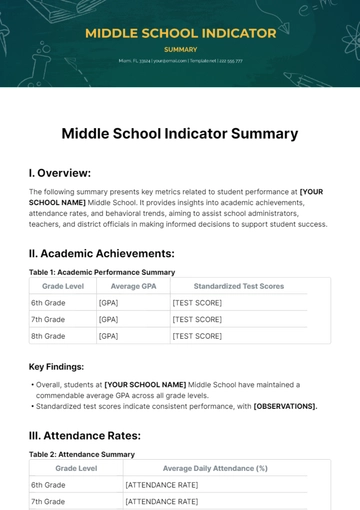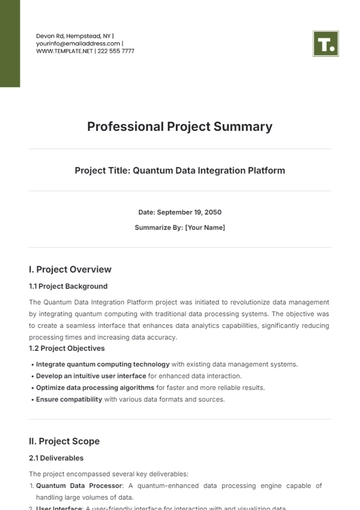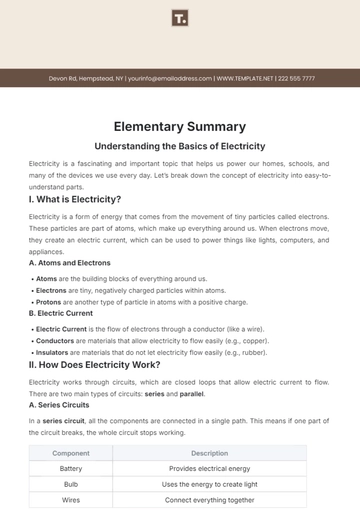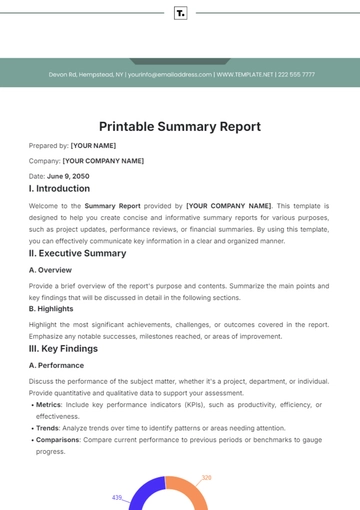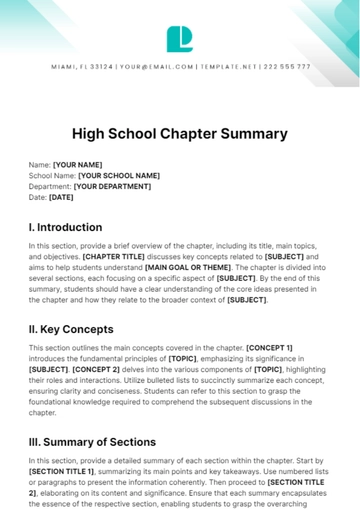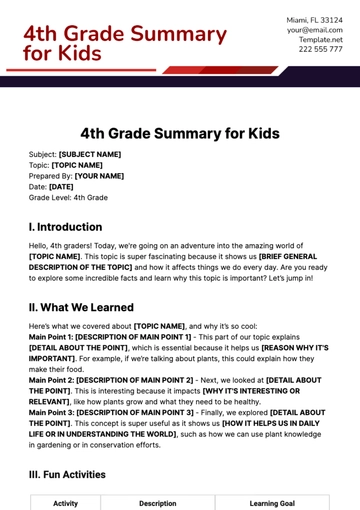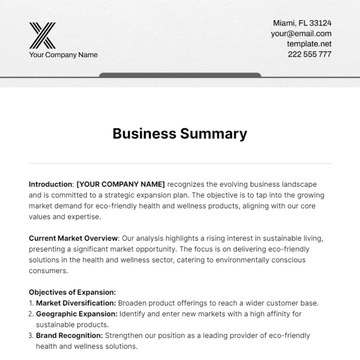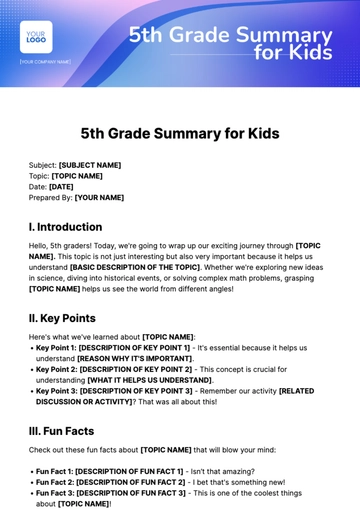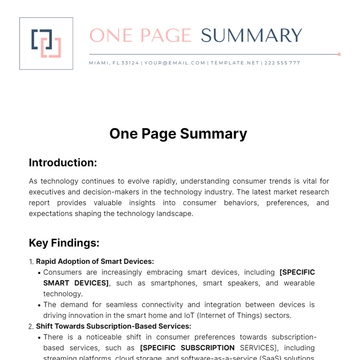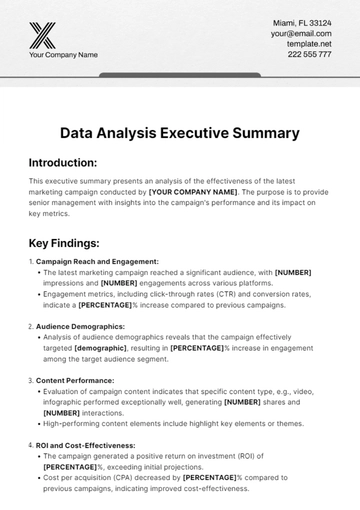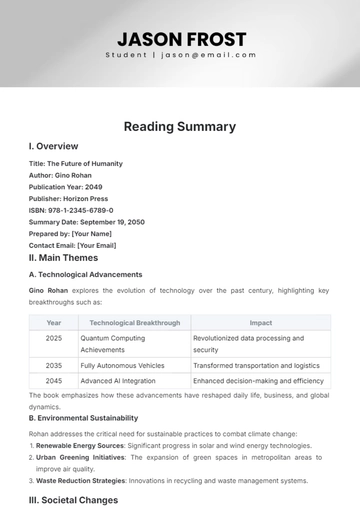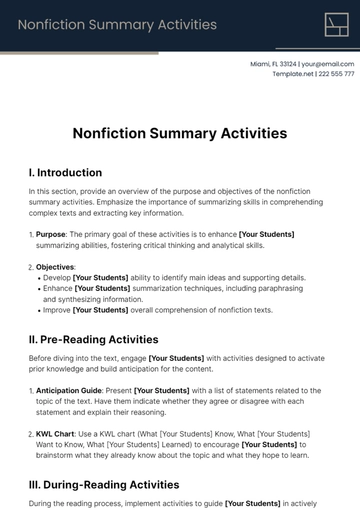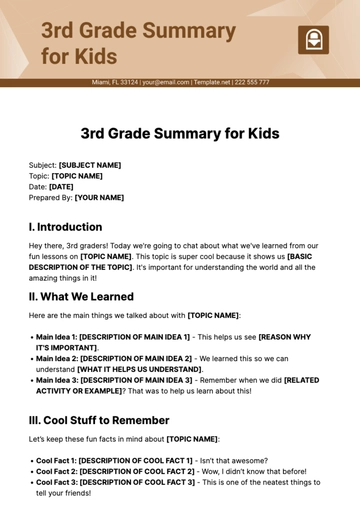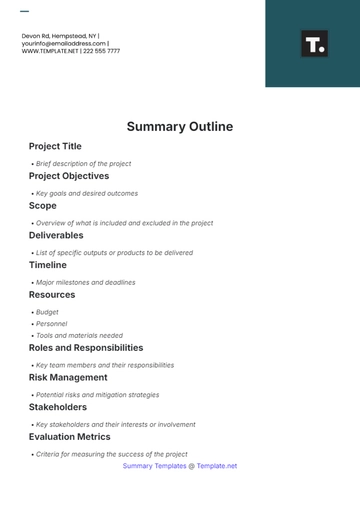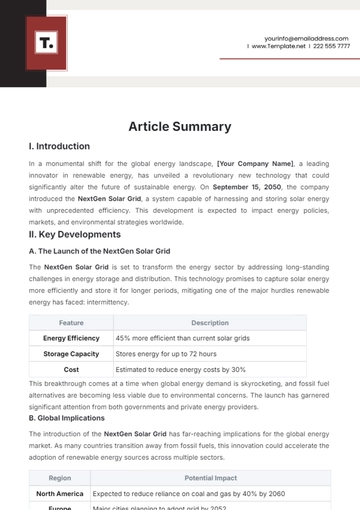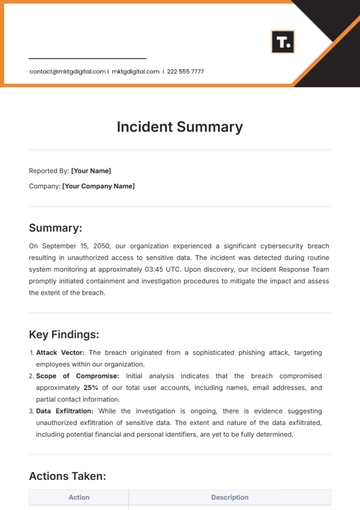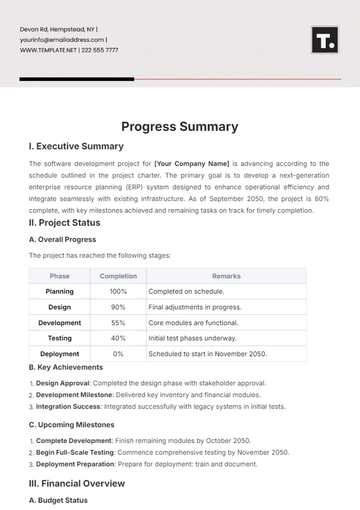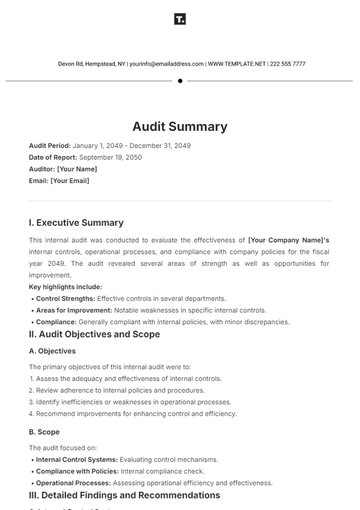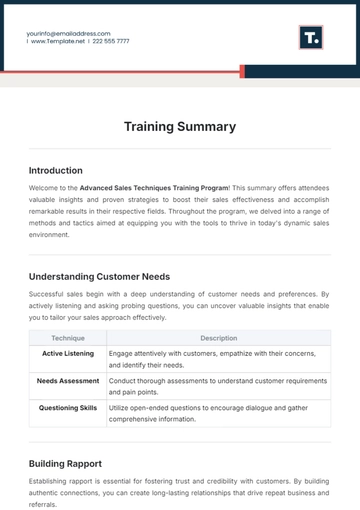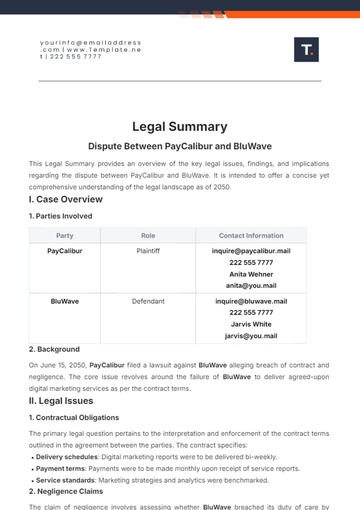Subjective Summary
Summarized By: [YOUR NAME]
Introduction:
Welcome to the Subjective Summary Template for [SUBJECT TITLE]. This template serves as a comprehensive guide for [TARGET AUDIENCE], offering insights into key concepts and principles within [SUBJECT]. Whether you're a student, researcher, or enthusiast, this summary aims to enhance your understanding and facilitate deeper exploration of the subject matter.
Macroeconomic Indicators:
Gross Domestic Product (GDP): GDP measures the total value of all goods and services produced within a country's borders during a specific period. It is a key indicator of a nation's economic health and performance.
Unemployment Rate: The unemployment rate indicates the percentage of the labor force that is unemployed and actively seeking employment. It reflects the health of the labor market.
Inflation Rate: Inflation measures the rate at which the general level of prices for goods and services is rising. It erodes purchasing power and affects consumer behavior.
Consumer Price Index (CPI): The CPI measures changes in the price level of a basket of consumer goods and services purchased by households. It is a widely used indicator of inflation.
Table 1: Comparison of Macroeconomic Indicators
Indicator | Definition | Importance |
|---|
Gross Domestic Product (GDP) | Total value of all goods and services produced within a country's borders | Measure of economic performance |
Unemployment Rate | Percentage of the labor force that is unemployed and actively seeking employment | Indicator of labor market health |
Inflation Rate | Rate at which the general level of prices for goods and services is rising | Affects purchasing power and consumer behavior |
Consumer Price Index (CPI) | Measures changes in the price level of a basket of consumer goods and services | Indicator of inflation |
Fiscal Policy:
Government Spending: Fiscal policy involves government expenditures on [SERVICES], as well as transfer payments such as [EXAMPLES OF TRANSFER PAYMENTS].
Taxation: Taxation is used by governments to raise revenue and influence economic behavior. Changes in tax rates can affect [SAVING DECISIONS].
Table 2: Comparison of Fiscal and Monetary Policy
Policy | Description | Tools |
|---|
Fiscal Policy | Government spending and taxation | Government spending, taxation |
Monetary Policy | Central bank's control over money supply and interest rates | Money supply, interest rates |
Monetary Policy:
Central Bank: Monetary policy is conducted by a country's central bank, which controls the money supply and interest rates to achieve [MACROECONOMIC OBJECTIVES].
Interest Rates: Central banks use interest rates to regulate borrowing and lending in the economy. Lower interest rates stimulate economic activity, while higher rates can [ECONOMIC ACTIVITY].
Table 3: International Trade and Exchange Rates
Concept | Definition |
|---|
Balance of Trade | Difference between a country's exports and imports of goods and services |
Exchange Rates | Value of one currency relative to another |
International Trade and Exchange Rates:
Balance of Trade: The balance of trade quantifies the variance between a nation's exports and imports of goods and services. A trade surplus arises when [COUNTRY] exports surpass imports, whereas a trade deficit arises when imports exceed exports.
Exchange Rates: Exchange rates determine the value of one currency relative to another. They influence international trade, investment, and capital flows.
Conclusion:
In conclusion, grasping the principles of macroeconomics is crucial for [PURPOSE]. By comprehending fundamental concepts like macroeconomic indicators, fiscal and monetary policy, and international trade, [TARGET AUDIENCE] can gain insight into economic dynamics and trends, enabling them to [OUTCOME].
Summary Templates @ Template.net
